Richard L. Daft - Management. 9th ed., 2010
Подождите немного. Документ загружается.

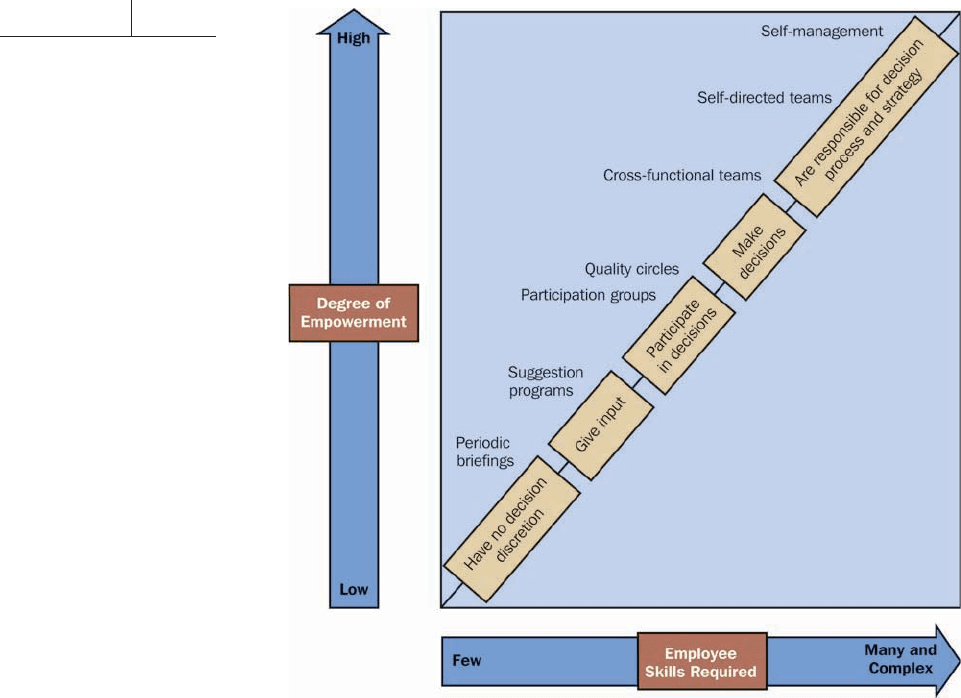
PART 5 LEADING460
4. Employees are rewarded based on company performance. Organizations that
empower workers often reward them based on the results shown in the company’s
bottom line. Organizations may also use other motivational compensation pro-
grams described in Exhibit 15.9 to tie employee efforts to company performance.
Many of today’s organizations are implementing empowerment programs, but
they are empowering workers to varying degrees. At some companies, empower-
ment means encouraging workers’ ideas while managers retain nal authority for
decisions; at others it means giving employees almost complete freedom and power
to make decisions and exercise initiative and imagination.
50
Current methods of
empowerment fall along a continuum, as illustrated in Exhibit 15.10. The continuum
runs from a situation in which front-line workers have almost no discretion, such as
on a traditional assembly line, to full empowerment, where workers even participate
in formulating organizational strategy.
Giving Meaning to Work Through Engagement
Another way to meet higher-level motivational needs and help people get intrin-
sic rewards from their work is to instill a sense of importance and meaningfulness.
In recent years, managers have focused on employee engagement, which puts less
EXHIBIT 15.10
A Continuum of
Empowerment
SOURCES: Based on Robert C. Ford and Myron D. Fottler, “Empowerment: A Matter of Degree,” Academy of
Management Executive 9, no. 3 (1995): 21–31; Lawrence Holpp, “Applied Empowerment,” Training (February 1994):
39–44; and David P. McCaffrey, Sue R. Faerman, and David W. Hart, “The Appeal and Diffi culties of Participative
Systems,” Organization Science 6, no. 6 (November–December 1995): 603–627.
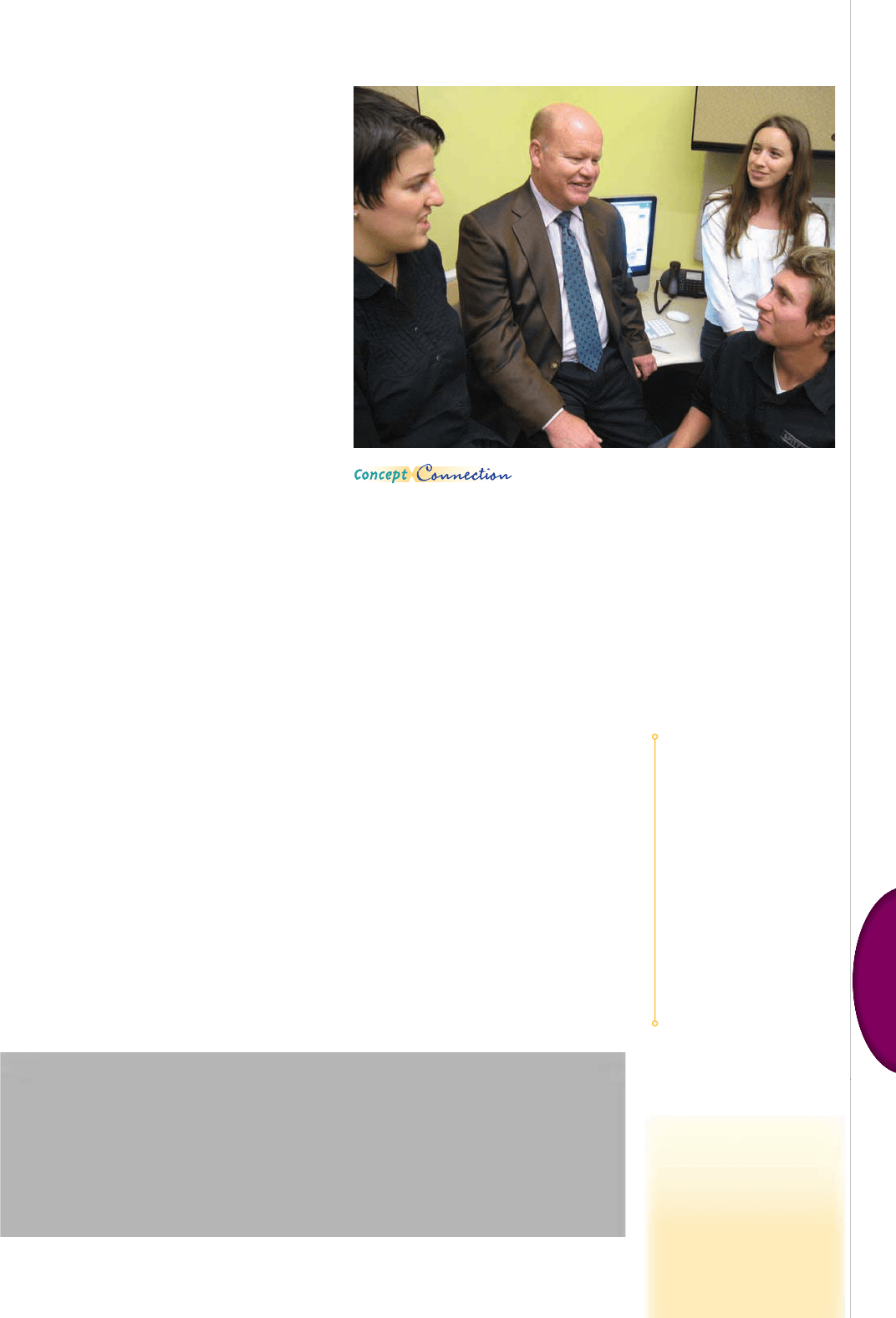
CHAPTER 15 MOTIVATING EMPLOYEES 461
5
Leading
emphasis on extrinsic rewards such as pay
and more emphasis on fostering an envi-
ronment in which people feel valued and
effective. Employee engagement means
that people enjoy their jobs and are satis-
ed with their work conditions, contribute
enthusiastically to meeting team and orga-
nizational goals, and feel a sense of belong-
ing and commitment to the organization.
Fully engaged employees care deeply
about the organization and actively seek
out ways to serve the mission.
51
How do managers develop engaged
employees? Not by controlling and order-
ing them around, but by organizing the
workplace in such a way that each person
can learn, contribute, and grow. Good man-
agers channel employee motivation toward
the accomplishment of organizational goals
by tapping into each individual’s unique
set of talents, skills, interests, attitudes, and
needs. By treating each employee as an indi-
vidual, good managers can put people in
the right jobs and provide intrinsic rewards
to every employee every day. Then, man-
agers make sure people have what they
need to perform, clearly de ne the desired
outcomes, and get out of the way. At the
Hotel Carlton in San Francisco, something
as simple as buying new vacuum cleaners
enhances employee engagement.
Keeping low-skilled service employees engaged can be particularly challenging, but manag-
ers at Joie de Vivre Hospitality Inc. are continually searching for ways to do it. At the Hotel
Carlton in San Francisco, which Joie de Vivre took over in 2003, one way was to buy a new
vacuum for each of the 15 housekeepers and to replace it each year. Previous management
had refused to replace the aging vacuums, despite numerous complaints from staff. Buy-
ing new vacuums made a big difference in employees’ performance and motivation. “It just
seems that [they] care more about us,” one housekeeper said.
Caring about employees and helping them see their jobs as valuable and fun are top
priorities for Joie de Vivre CEO Chip Conley. The company sponsors employee parties and
awards, arranges annual employee retreats, and offers free classes on a variety of topics,
including English as a second language. Most importantly, it pushes managers to seek and
act on feedback from employees, to make the workplace feel like a community of caring,
and to fi nd ways to help people see how their jobs make a difference. It is essential, Conley
says to “focus on the impact they’re making rather than just on the task of cleaning the
toilet.”
52
Hotel Carlton, Joie de
Vivre Hospitality Inc.
Innovative Way
Brad Inman (center), chairman and founder of
TurnHere, Inc. of Emeryville, California, gathers his staff every day at 3 p.m. to kick
around ideas, see works in progress, talk about the fi nancial status of the company,
and discuss how to meet revenue goals. “At fi rst people thought I was crazy when
I said we should all get together every day,” says Inman, founder of the company
that is a leading platform for online video production and provides studio-quality
Internet video advertising for clients. But Inman believes involving and listening to
employees is critical to employee engagement. “The key to retention is for people to
feel they are contributing to building something, not just showing up,” says Inman.
PHOTO COURTESY TURN HERE, PHOTO BY NAAMAH USSEY
e
e
e
e
e
eng
agement
A
s
i
tu
at
i
o
n in
w
w
w
w
w
w
hi
w
ch emplo
y
ees en
j
o
y
their
w
w
w
w
w
ork
,
,
contribute enthusiasti-
c
c
c
ca
al
c
c
ly
to meetin
g
g
oa
l
s, an
d
f
ee
l
l
a
a
a
a
a
s
a
ense o
f
b
e
l
on
g
i
g
n
g
g
an
d
com-
m
m
m
mit
m
m
m
mit
men
men
tt
t
t
ot
o
t
he
he
org
org
ani
ani
zat
zat
ion
ion
.
Text not available due to copyright restrictions

PART 5 LEADING462
ch15
A MANAGER’S ESSENTIALS: WHAT HAVE WE LEARNED?
▪ This chapter introduced a number of important ideas about the motivation of
people in organizations. Rewards are of two types: intrinsic rewards that result
from the satisfactions a person receives in the process of performing a job, and
extrinsic rewards such as promotions that are given by another person. Managers
work to help employees receive both intrinsic and extrinsic rewards from their
jobs.
▪ The content theories of motivation focus on the nature of underlying employee
needs. Maslow’s hierarchy of needs, Alderfer’s ERG theory, Herzberg’s two-
factor theory, and McClelland’s acquired needs theory all suggest that people are
motivated to meet a range of needs.
▪ Process theories examine how people go about selecting rewards with which to
meet needs. Goal-setting theory indicates that employees are more motivated
if they have clear, speci c goals and receive regular feedback concerning their
progress toward meeting goals. Equity theory says that people compare their
contributions and outcomes with others’ and are motivated to maintain a feel-
ing of equity. Expectancy theory suggests that people calculate the probability of
achieving certain outcomes. Still another motivational approach is reinforcement
theory, which says that employees learn to behave in certain ways based on the
use of reinforcements.
▪ The application of motivational ideas is illustrated in job design and other moti-
vational programs. Job design approaches include job simpli cation, job rotation,
job enlargement, job enrichment, and the job characteristics model. Managers can
change the structure of work to meet employees’ high-level needs. The recent
trend toward empowerment motivates by giving employees more information
and authority to make decisions in their work while connecting compensation to
the results.
▪ Employee engagement has become one of the hottest topics in management.
By engaging employees, managers can instill employees with a sense of impor-
tance and meaningfulness, helping them reap intrinsic rewards and meet
higher level needs. One way to measure the factors that determine whether
people have high levels of engagement and motivation is the Q12, a list of
12 questions about the day-to-day realities of a person’s job and workplace
relationships.
Text not available due to copyright restrictions
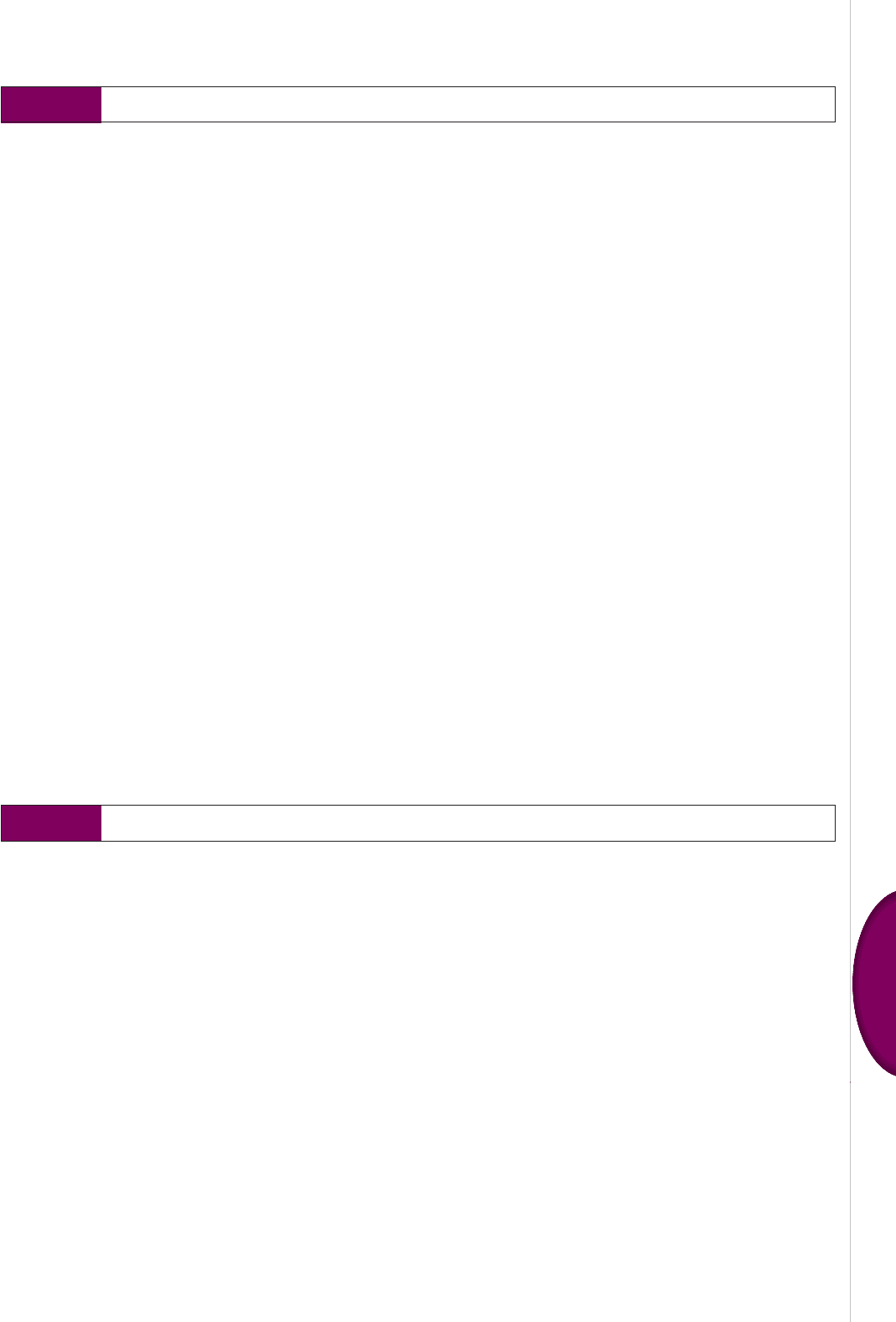
CHAPTER 15 MOTIVATING EMPLOYEES 463
5
Leading
1. In response to security threats in today’s world,
the U.S. government federalized airport security
workers. Many argued that simply making screen-
ers federal workers would not solve the root prob-
lem: bored, low-paid, and poorly trained security
workers have little motivation to be vigilant. How
might these employees be motivated to provide
the security that travel threats now demand?
2. One small company recognizes an employee of
the month, who is given a parking spot next to the
president’s space near the front door. What theo-
ries would explain the positive motivation associ-
ated with this policy?
3. Using Hackman and Oldham’s core job dimen-
sions, compare and contrast the jobs of these two
state employees: (1) Jared, who spends much of
his time researching and debating energy policy
to make recommendations that will eventually
be presented to the state legislature and (2) Anise,
who spends her days planting and caring for the
ower gardens and grounds surrounding the state
capitol building.
4. If an experienced secretary discovered that she
made less money than a newly hired janitor,
how do you think she would react? What inputs
and outcomes might she evaluate to make this
comparison?
5. Would you rather work for a supervisor high in
need for achievement, af liation, or power? Why?
What are the advantages and disadvantages of
each?
6. In one Florida school district, students are rewarded
for good grades and attendance with Happy Meals
from McDonald’s. Do you believe this type of rein-
forcement can help improve student grades and
attendance? What might be some potential prob-
lems with this approach?
7. A survey of teachers found that two of the most
important rewards were the belief that their work
was important and a feeling of accomplishment.
According to Maslow’s theory, what needs do
these rewards meet?
8. The teachers in question 7 also reported that pay
and bene ts were poor, yet they continue to teach.
Use Herzberg’s two-factor theory to explain this
nding.
9. What theories explain why employees who score
high on the Q12 questionnaire are typically highly
motivated and productive?
10. How can empowerment lead to higher motivation
of employees? Could a manager’s empowerment
efforts sometimes contribute to demotivation as
well? Discuss.
ch15
DISCUSSION QUESTIONS
ch15
MANAGEMENT IN PRACTICE: EXPERIENTIAL EXERCISE
What Motivates You?
Indicate how important each characteristic is to you.
Answer according to your feelings about the most
recent job you had or about the job you currently
hold. Circle the number on the scale that repre-
sents your feeling—1 (very unimportant) to 7 (very
important).
1. The feeling of self-esteem a person gets from being
in that job
1 2 3 4 5 6 7
2. The opportunity for personal growth and devel-
opment in that job
1 2 3 4 5 6 7
3. The prestige of the job inside the company (i.e.,
regard received from others in the company)
1 2 3 4 5 6 7
4. The opportunity for independent thought and
action in that job
1 2 3 4 5 6 7
5. The feeling of security in that job
1 2 3 4 5 6 7
6. The feeling of self-ful llment a person gets from
being in that position (i.e., the feeling of being able
to use one’s own unique capabilities, realizing
one’s potential)
1 2 3 4 5 6 7
7. The prestige of the job outside the company
(i.e., the regard received from others not in the
company)
1 2 3 4 5 6 7

PART 5 LEADING464
8. The feeling of worthwhile accomplishment in that
job
1 2 3 4 5 6 7
9. The opportunity in that job to give help to other
people
1 2 3 4 5 6 7
10. The opportunity in that job for participation in the
setting of goals
1 2 3 4 5 6 7
11. The opportunity in that job for participation in the
determination of methods and procedures
1 2 3 4 5 6 7
12. The authority connected with the job
1 2 3 4 5 6 7
13. The opportunity to develop close friendships in
the job
1 2 3 4 5 6 7
Scoring and Interpretation
Score the exercise as follows to determine what moti-
vates you:
Rating for question 5 = ______
.
Divide by 1 = ______ security.
Rating for questions 9 and 13 = ______
.
Divide by 2 = ______ social.
Rating for questions 1, 3, and 7 = ______
.
Divide by 3 = ______ esteem.
Rating for questions 4, 10, 11, and 12 = ______
.
Divide by 4 = ______ autonomy.
Rating for questions 2, 6, and 8 = ______
.
Divide by 3 = ______ self-actualization.
Your instructor has national norm scores for presi-
dents, vice presidents, and upper middle-level, lower
middle-level, and lower-level managers with which
you can compare your mean importance scores. How
do your scores compare with the scores of managers
working in organizations?
SOURCE: Lyman W. Porter, Organizational Patterns of Managerial Job
Attitudes (New York: American Foundation for Management Research,
1964), pp. 17, 19. Used with permission.
To Renege or Not to Renege?
Federico Garcia, vice president of sales for Puget
Sound Building Materials, a company based in
Tacoma, Washington, wasn’t all that surprised by
what company president Michael Otto and CFO
James Wilson had to say during their meeting that
morning.
Last year, launching a major expansion made
sense to everyone at Puget, a well-established com-
pany that provided building materials as well as
manufacturing and installation services to residential
builders in the Washington and Oregon markets.
Puget looked at the record new housing starts and
decided it was time to move into the California and
Arizona markets, especially concentrating on San
Diego and Phoenix, two of the hottest housing mar-
kets in the country. Federico carefully hired promis-
ing new sales representatives and offered them hefty
bonuses if they reached the goals set for the new
territory over the next 12 months. All of the represen-
tatives had performed well, and three of them had
exceeded Puget’s goal—and then some. The incentive
system he’d put in place had worked well. The sales
reps were expecting handsome bonuses for their hard
work.
Early on, however, it became all too clear that
Puget had seriously underestimated the time it took
to build new business relationships and the costs
associated with the expansion, a mistake that was
already eating into pro t margins. Even more dis-
tressing were the most recent gures for new housing
starts, which were heading in the wrong direction. As
Michael said, “Granted, it’s too early to tell if this is
just a pause or the start of a real long-term downturn.
But I’m worried. If things get worse, Puget could be
in real trouble.”
James looked at Federico and said, “Our lawyers
built enough contingency clauses into the sales reps’
contracts that we’re not really obligated to pay those
bonuses you promised. What would you think about
not paying them?” Federico turned to the president,
who said, “Why don’t you think about it, and get
back to us with a recommendation?”
Federico felt torn. On the one hand, he knew the
CFO was correct. Puget wasn’t, strictly speaking,
under any legal obligation to pay out the bonuses,
and the eroding pro t margins were a genuine cause
for concern. The president clearly did not want to pay
the bonuses. But Federico had created a rst-rate sales
force that had done exactly what he’d asked them to
ch15
MANAGEMENT IN PRACTICE: ETHICAL DILEMMA
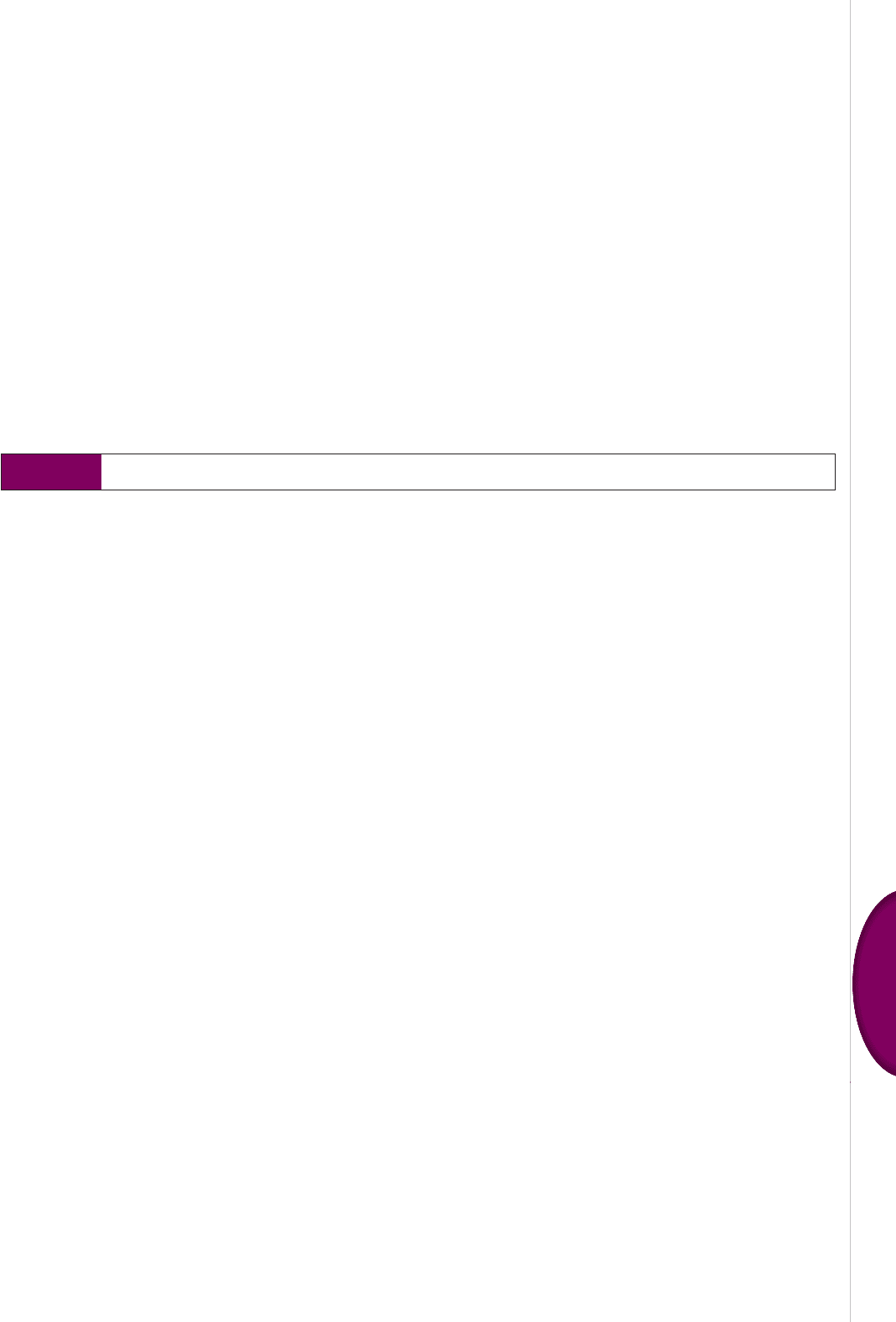
CHAPTER 15 MOTIVATING EMPLOYEES 465
5
Leading
do. He prided himself on being a man of his word,
someone others could trust. Could he go back on his
promises?
What Would You Do?
1. Recommend to the president that a meeting be
arranged with the sales representatives entitled to a
bonus and tell them that their checks were going to
be delayed until the Puget’s nancial picture clari-
ed. The sales reps would be told that the company
had a legal right to delay payment and that it may
not be able to pay the bonuses if its nancial situa-
tion continues to deteriorate.
2. Recommend a meeting with the sales representa-
tives entitled to a bonus and tell them the com-
pany’s deteriorating nancial situation triggers one
of the contingency clauses in their contract so that
the company won’t be issuing their bonus checks.
Puget will just have to deal with the negative impact
on sales rep motivation.
3. Recommend strongly to the president that Puget
pay the bonuses as promised. The legal contracts
and nancial situation don’t matter. Be prepared to
resign if the bonuses are not paid as you promised.
Your word and a motivated sales team mean every-
thing to you.
SOURCE: Based on Doug Wallace, “The Company Simply Refused to
Pay,” Business Ethics (March–April 2000): 18; and Adam Shell, “Over-
heated Housing Market Is Cooling,” USA Today, November 2, 2005,
www.usatoday.com/money/economy/housing/2005-11-01-real-estate-
usat_x.htm.
ch15
CASE FOR CRITICAL ANALYSIS
Kimbel’s Department Store
Frances Patterson, Kimbel’s CEO, looked at the lat-
est “Sales by Manager” gures on her daily Web-
based sales report. What did these up-to-the-minute
numbers tell her about the results of Kimbel’s trial of
straight commission pay for its salespeople?
A regional chain of upscale department stores
based in St. Louis, Kimbel’s faces the challenge shared
by most department stores these days: how to stop
losing share of overall retail sales to discount store
chains. A key component of the strategy the company
formulated to counter this long-term trend is the
revival of great customer service on the oor, once a
hallmark of upscale stores. Frances knows Kimbel’s
has its work cut out for it. When she dropped in on
several stores incognito a few years ago, she was dis-
mayed to discover that nding a salesperson actively
engaged with a customer was rare. In fact, nding a
salesperson when a customer wanted to pay for an
item was often dif cult.
About a year and a half ago, the CEO read about
a quiet revolution sweeping department store retail-
ing. At stores such as Bloomingdale’s and Bergdorf
Goodman, managers put all salespeople on straight
commission. Frances decided to give the system a
yearlong try in two area stores.
Such a plan, she reasoned, would be good for
Kimbel’s if it lived up to its promise of attracting
better salespeople, improving their motivation, and
making them more customer-oriented. It could also
potentially be good for employees. Salespeople in
departments such as electronics, appliances, and jew-
elry, where expertise and highly personalized services
paid off, had long worked solely on commission. But
the majority of employees earned an hourly wage
plus a meager 0.5 percent commission on total sales.
Under the new scheme, all employees would earn a
7 percent commission on sales. When she compared
the two systems, she saw that a new salesclerk in
women’s wear would earn $35,000 on $500,000 in sales,
as opposed to only $18,000 under the old scheme.
Now, with the trial period about to end, Frances
notes that while overall sales in the two stores have
increased modestly, so also has employee turnover.
When the CEO examined the sales-by-manager gures,
it was obvious that some associates had thrived and
others had not. Most fell somewhere in the middle.
For example, Juan Santore is enthusiastic about the
change—and for good reason. He works in women’s
designer shoes and handbags, where a single item
can cost upwards of $1,000. Motivated largely by the
desire to make lots of money, he’s a personable, out-
going individual with an entrepreneurial streak. Ever
since the straight commission plan took effect, he has
put even more time and effort into cultivating rela-
tionships with wealthy customers, and it shows. His
pay has increased an average of $150 per week.
It’s a different story in the lingerie department,
where even luxury items have more modest price
tags. The lingerie department head, Gladys Weinholtz,
said salespeople in her department are demoralized.
Several valued employees had quit, and most miss the
security of a salary. No matter how hard they work,
they cannot match their previous earnings. “Yes,
they’re paying more attention to customers,” con-
ceded Gladys, “but they’re so anxious about making
ends meet, they tend to pounce on the poor women
who wander into the department.” Furthermore, lin-
gerie sales associates are giving short shrift to duties
such as handling complaints or returns that don’t

PART 5 LEADING466
immediately translate into sales. “And boy, do they
ever resent the sales superstars in the other depart-
ments,” said Gladys.
The year is nearly up. It’s time to decide. Should
Frances declare the straight commission experiment
a success on the whole and roll it out across the chain
over the next six months?
Questions
1. What theories about motivation underlie the
switch from salary to commission pay?
2. What needs are met under the commission system?
Are they the same needs in the shoes and handbag
department as they are in lingerie? Explain.
3. If you were Frances Patterson, would you go back
to the previous compensation system, implement
the straight commission plan in all Kimbel’s
stores, or devise and test some other compensation
method? If you decided to test another system,
what would it look like?
SOURCES: Based on Cynthia Kyle, “Commissions question—to pay . . . or
not to pay?” Michigan Retailer (March 2003), www.retailers.com/news/
retailers/03mar/mr0303commissions.html; “Opinion: Effective Retail
Sales Compensation,” Furniture World Magazine (March 7, 2006), www
.furninfo.com/absolutenm/templates/NewsFeed.asp?articleid=6017;
Terry Pristin, “Retailing’s Elite Keep the Armani Moving Off the Racks,”
The New York Times, December 22, 2001; Francine Schwadel, “Chain
Finds Incentives a Hard Sell,” The Wall Street Journal, July 5, 1990; and
Amy Dunkin, “Now Salespeople Really Must Sell for Their Supper,”
BusinessWeek (July 31, 1989): 50–52.
ch15
ON THE JOB VIDEO CASE
Flight 001: Motivating Employees
All retail jobs are not created equal. Just ask Amanda
Shank. At a previous job, a storeowner bluntly told
her, “You’re just a number. You can be replaced at any
time.” Shank said, “When you’re told something like
that, why would you want to put any effort in?” That
sort of callous treatment is hardly an incentive. Luck-
ily, after landing a job at Flight 001, Shank started to
feel motivated again.
Flight 001 co-founder Brad John frequently visits
his New York stores to talk with staff about what’s
happening. While visiting Shank’s Brooklyn store,
where she had recently been promoted to assistant
store manager, John asked if customers were shop-
ping differently after the airlines had added new fees
for checked luggage. Shank con rmed John’s suspi-
cions and gave him a full report along with recom-
mendations for how they might make adjustments in
inventory and merchandising.
Shank is thrilled to have found a place where she
can make a contribution and be challenged. “At this
company they make an effort to show you you’re
appreciated; you have a say in what goes on. You’re
given compliments and feedback about what you
could be better at,” she explained. Instead of doom-
ing her to dissatisfaction, Flight 001’s hygiene factors
helped set the stage for her to feel motivated on mul-
tiple levels. Working in an environment where her
ideas are valued and put into action meets her needs
for recognition, respect, growth, and self-ful llment.
Shank also bene ts from a sense of “task signi cance,”
because the owners genuinely reinforce the percep-
tion that her job is important and has a direct impact
on customers and Flight 001’s success.
Although opportunities for job enrichment might
seem limited in retail, store leader Claire Rainwater
involves her crew members in projects that use their
strengths. If someone excels at organization and
operations, she asks that person to identify and imple-
ment an improvement that excites him or her. She
gives visually talented associates free reign to create
new merchandising displays. Rainwater could easily
provide direction on how to approach these tasks, but
as a good manager, she allows her crew members the
autonomy to determine how they want to approach
and execute tasks, which ultimately creates a greater
sense of empowerment and engagement. If Rainwa-
ter merely gave her crew members more variety (job
enlargement), they wouldn’t learn as much or experi-
ence the same degree of achievement.
On the debate of intrinsic vs. extrinsic rewards,
Rainwater is the rst to admit that, in an ideal world,
both rewards would be more than satisfactory. She
concedes that liking where you work and the people
with whom you work engenders a sense of belong-
ing that can offset a less than thrilling paycheck. In
general, retail isn’t known for generous entry-level
compensation. To show up and make an effort, work-
ers need a sense of equity, which probably comes
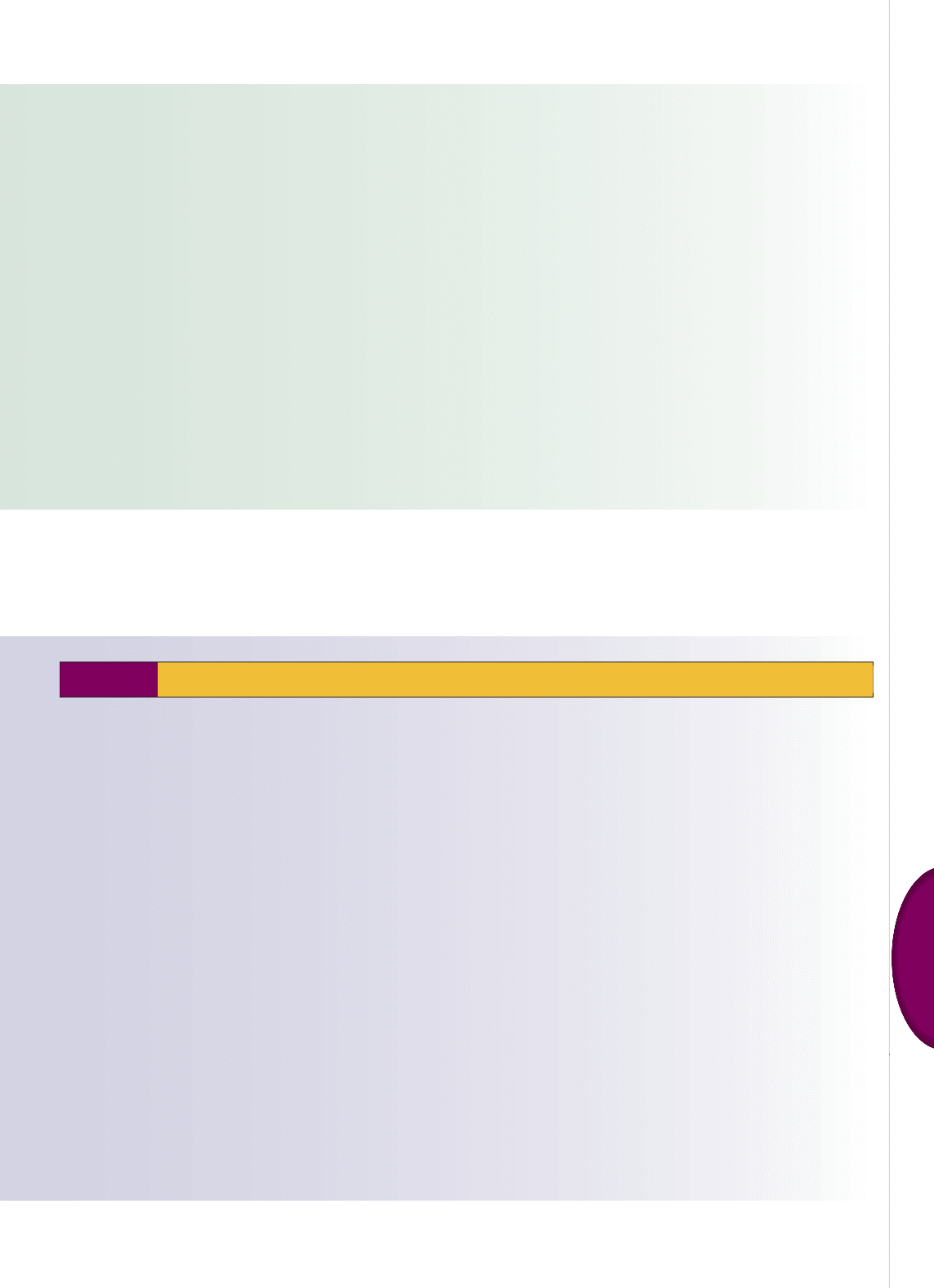
CHAPTER 15 MOTIVATING EMPLOYEES 467
5
Leading
Friday Night Lights (I)
The Odessa, Texas, passion for Friday night high
school football (Permian High Panthers) comes
through clearly in this cinematic treatment of H. G.
(Buzz) Bissinger’s well-regarded book of the same
title.
1
Coach Gary Gaines (Billy Bob Thornton) leads
them to the 1988 semi nals where they must compete
against a team of much larger players. Fast-moving
pace in the football sequences and a slower pace in
the serious, introspective sequences give this lm
many ne moments.
Motivation
This sequence starts with a panning shot of the
Winchell’s house. Coach Gaines says to Mike Winchell
(Lucas Black), “Can you get the job done, Mike?” The
sequence follows a harsh practice and Mike talking to
his brother or sister from a telephone booth. The lm
continues with the Odessa-Permian vs. Cooper foot-
ball game.
What to Watch for and Ask Yourself
▪ This chapter de ned motivation as “the forces
either within or external to a person that arouse
enthusiasm and persistence to pursue a certain
course of action.” Does Mike Winchell show
the characteristics of this de nition early in the
sequence? Do you expect him to show any of the
characteristics after the sequence ends and he
returns to the team?
▪ Which needs discussed earlier in this chapter does
Mike appear focused on early in the sequence?
Which needs can become his focus later in the
sequence? See the hierarchy of needs theory and
ERG theory sections earlier in the chapter for some
suggestions.
▪ Apply the various parts of goal-setting theory to
this sequence. Which parts of that theory appear in
this sequence?
1
J. Craddock, ed., VideoHound’s Golden Movie Retriever (Detroit, MI:
Gale Cengage Learning, 2008), p. 368.
ch15
BIZ FLIX VIDEO CASE
from feeling they’re paid fairly in the context of retail.
Promotions, which usually involve taking on addi-
tional management responsibilities, are the answer
for those seeking greater nancial rewards. High-
end retail also tends to pay better because it requires
employees with the skills and competence to deliver
sophisticated customer service and helpful product
information.
A big factor in retail compensation is that, his-
torically, the industry has employed a temporary
workforce. Flight 001’s head of crew development,
Emily Grif n, con rmed that “retail is temporary
for a lot of people.” Most associates just want to
make some money while pursuing other interests as
students, photographers, musicians, etc. A career in
retail interests only a handful. According to Grif n,
“There’s room for everybody in retail.” Customers
love the variety of people who work at Flight 001.
When visiting a store, customers want to talk to
someone interesting and, as Grif n put it, “They
don’t just want somebody chewing gum behind the
register.”
Usually Grif n can tell which associates are pass-
ing through and who might stick around. What is
interesting is that when she started at Flight 001, Grif n
thought she was passing through.
Discussion Questions
1. According to Maslow’s hierarchy, which basic
needs did Shank’s old boss fail to meet?
2. How might feeling underpaid affect the work of a
Flight 001 associate?
3. Speculate the possible reasons Grif n stayed at
Flight 001 to pursue a career.

PART 5 LEADING468
Questions based on Mitchell M. 1.
Handelsman, William L. Briggs,
Nora Sullivan, and Annette Towler,
“A Measure of College Student
Course Engagement,” Journal of
Educational Research 98 (January/
February 2005): 184–191.
David Silburt, “Secrets of the Super 2.
Sellers,” Canadian Business (January
1987): 54–59; “Meet the Savvy Su-
persalesmen,” Fortune (February 4,
1985): 56–62; Michael Brody, “Meet
Today’s Young American Worker,”
Fortune (November 11, 1985):
90–98; and Tom Richman, “Meet the
Masters. They Could Sell You Any-
thing,” Inc. (March 1985): 79–86.
Richard M. Steers and Lyman W. 3.
Porter, eds., Motivation and Work Be-
havior, 3rd ed. (New York: McGraw-
Hill, 1983); Don Hellriegel, John W.
Slocum, Jr., and Richard W. Woodman,
Organizational Behavior, 7th ed. (St.
Paul, MN: West, 1995),
p. 170; and Jerry L. Gray and
Frederick A. Starke, Organizational
Behavior: Concepts and Applica-
tions, 4th ed. (New York: Macmillan,
1988), pp.104–105.
Carol Hymowitz, “Readers Tell Tales 4.
of Success and Failure Using Rating
Systems,” The Wall Street Journal,
May 29, 2001.
Alan Deutschman, “Can Google 5.
Stay Google?” Fast Company
(August 2005): 62–68.
See Linda Grant, “Happy Workers, 6.
High Returns,” Fortune (January
12, 1998): 81; Elizabeth J. Hawk
and Garrett J. Sheridan, “The Right
Stuff,” Management Review (June
1999): 43–48; Michael West and
Malcolm Patterson, “Profi table Per-
sonnel,” People Management (Janu-
ary 8, 1998): 28–31; Anne Fisher,
“Why Passion Pays,” FSB (Septem-
ber 2002): 58; and Curt Coffman
and Gabriel Gonzalez-Molina, Follow
This Path: How the World’s Great
Organizations Drive Growth By
Unleashing Human Potential (New
York: Warner Books, 2002).
Abraham F. Maslow, “A Theory of 7.
Human Motivation,” Psychological
Review 50 (1943): 370–396.
Sarah Pass, “On the Line,” 8. People
Management (September 15, 2005):
38.
Clayton Alderfer, 9. Existence, Related-
ness, and Growth (New York: Free
Press, 1972).
Robert Levering and Milton 10.
Moskowitz, “2004 Special Report:
The 100 Best Companies To Work
For,” Fortune (January 12, 2004):
56–78.
Jena McGregor, “Employee Innova-11.
tor; Winner: USAA,” Fast Company
(October 2005): 57.
Jeff Barbian, “C’mon, Get Happy,” 12.
Training (January 2001): 92–96.
Karol Rose, “Work-Life Effective-13.
ness,” Fortune (September 29, 2003):
S1–S17.
Frederick Herzberg, “One More 14.
Time: How Do You Motivate Em-
ployees?” Harvard Business Review
(January 2003): 87–96.
David C. McClelland, 15.
Human Moti-
vation (Glen
view, IL: Scott, Foresman,
1985).
David C. McClelland, “The Two 16.
Faces of Power,” in Organizational
Psychology, ed. D. A. Colb, I. M.
Rubin, and J. M. McIntyre (Englewood
Cliffs, NJ: Prentice Hall, 1971),
pp. 73–86.
See Gary P. Latham and Edwin A. 17.
Locke, “Enhancing the Benefi ts and
Overcoming the Pitfalls of Goal
Setting,” Organizational Dynamics
35, no. 4 (2006): 332–338; Edwin A.
Locke and Gary P. Latham, “Build-
ing a Practically Useful Theory of
Goal Setting and Task Motivation:
A 35-Year Odyssey,” The American
Psychologist 57, no. 9 (September
2002): 705ff; Gary P. Latham and
Edwin A. Locke, “Self-Regulation
through Goal Setting,” Organiza-
tional Behavior and Human Deci-
sion Processes 50, no. 2 (December,
1991): 212–247; G. P. Latham and
G. H. Seijts, “The Effects of Proximal
and Distal Goals on Performance
of a Moderately Complex Task,”
Journal of Organizational Behavior
20, no. 4 (1999): 421–428; P. C. Early,
T. Connolly, and G. Ekegren, “Goals,
Strategy Development, and Task
Performance: Some Limits on the
Effi cacy of Goal Setting,” Journal of
Applied Psychology 74 (1989): 24–33;
E. A. Locke, “Toward a Theory of
Task Motivation and Incentives,”
Organizational Behavior and Human
Performance 3 (1968): 157–189;
Gerard H. Seijts, Ree M. Meertens,
and Gerjo Kok, “The Effects of Task
Importance and Publicness on the
Relation Between Goal Diffi culty
and Performance,” Canadian Journal
of Behavioural Science 29, no. 1
(1997): 54ff.
Locke and Latham, “Building a 18.
Practically Useful Theory of Goal
Setting and Task Motivation.”
Edwin A. Locke, “Linking Goals 19.
to Monetary Incentives,” Academy
of Management Executive 18, no. 4
(2005): 130–133.
Latham and Locke, “Enhancing 20.
the Benefi ts and Overcoming the
Pitfalls of Goal Setting.”
Brian Ellsworth, “Making a Place for 21.
Blue Collars in the Boardroom,” The
New York Times, August 3, 2005.
J. M. Ivanecevich and J. T. McMahon, 22.
“The Effects of Goal Setting, Exter-
nal Feedback, and Self-Generated
Feedback on Outcome Variables:
A Field Experiment,” Academy
of Management Journal 25, no. 2
(June 1982): 359–372; G. P. Latham
and E. A. Locke, “Self-Regulation
Through Goal Setting,” Orga-
nizational Behavior and Human
Decision Processes 50, no. 2 (1991):
212–247.
Gary P. Latham, “The Motivational 23.
Benefi ts of Goal-Setting,” Academy
of Management Executive 18, no. 4
(2004): 126–129.
J. Stacy Adams, “Injustice in Social 24.
Exchange,” in Advances in Ex-
perimental Social Psychology, 2nd
ed., ed. L. Berkowitz (New York:
Academic Press, 1965); and J. Stacy
Adams, “Toward an Understanding
of Inequity,” Journal of Abnormal and
Social Psychology (November 1963):
422–436.
“Study: The Brain Prefers Working 25.
Over Getting Money for Nothing,”
TheJournalNews.com, May 14, 2004,
www.thejournalnews.com/apps/
pbcs.dll/frontpage.
Ray V. Montagno, “The Effects of 26.
Comparison to Others and Pri-
mary Experience on Responses to
Task Design,” Academy of Manage-
ment Journal 28 (1985): 491–498;
and Robert P. Vecchio, “Predicting
Worker Performance in Inequitable
ch15
ENDNOTES

CHAPTER 15 MOTIVATING EMPLOYEES 469
5
Leading
Settings,” Academy of Management
Review 7 (1982): 103–110.
James E. Martin and Melanie M. 27.
Peterson, “Two-Tier Wage Structures:
Implications for Equity Theory,”
Academy of Management Journal 30
(1987): 297–315.
Jared Sandberg, “Why You May 28.
Regret Looking at Papers Left on
the Offi ce Copier,” The Wall Street
Journal, June 20, 2006.
Victor H. Vroom, 29. Work and Motiva-
tion (New York: Wiley, 1964); B. S.
Gorgopoulos, G. M. Mahoney, and
N. Jones, “A Path-Goal Approach to
Productivity,” Journal of Applied Psy-
chology 41 (1957): 345–353; and E.
E. Lawler III, Pay and Organizational
Effectiveness: A Psychological View
(New York: McGraw-Hill, 1981).
Richard L. Daft and Richard M. 30.
Steers, Organizations: A Micro/
Macro Approach (Glenview, IL:
Scott, Foresman, 1986).
Studies reported in Tom Rath, “The 31.
Best Way to Recognize Employ-
ees,” Gallup Management Journal
(December 9, 2004): 1–5; and Erin
White, “Theory & Practice: Praise
from Peers Goes a Long Way—
Recognition Programs Help
Companies Retain Workers as Pay
Raises Get Smaller,” The Wall Street
Journal, December 19, 2005.
Alexander D. Stajkovic and Fred 32.
Luthans, “A Meta-Analysis of the
Effects of Organizational Behavior
Modifi cation on Task Performance,
1975–95,” Academy of Management
Journal (October 1997): 1122–1149;
H. Richlin, Modern Behaviorism (San
Francisco: Freeman, 1970); and B. F.
Skinner, Science and Human Behav-
ior (New York: Macmillan, 1953).
Stajkovic and Luthans, “Effects of 33.
Organizational Behavior Modifi ca-
tion on Task Performance,” and Fred
Luthans and Alexander D. Stajkovic,
“Reinforce for Performance: The
Need to Go Beyond Pay and Even
Rewards,” Academy of Management
Executive 13, no. 2 (1999): 49–57.
Daryl W. Wiesman, “The Effects of 34.
Performance Feedback and Social
Reinforcement on Up-Selling at
Fast-Food Restaurants,” Journal of
Organizational Behavior Manage-
ment 26, no. 4 (2006): 1–18.
Reported in Charlotte Garvey, 35.
“Meaningful Tokens of Apprecia-
tion,” HR Magazine (August 2004):
101–105.
Kenneth D. Butterfi eld and Linda 36.
Klebe Treviño, “Punishment from
the Manager’s Perspective: A
Grounded Investigation and Induc-
tive Model,” Academy of Manage-
ment Journal 39, no. 6 (December
1996): 1479–1512; and Andrea
Casey, “Voices from the Firing Line:
Managers Discuss Punishment in the
Workplace,” Academy of Management
Executive 11, no. 3 (1997): 93–94.
Winnie Hu, “School’s New Rule for 37.
Pupils in Trouble: No Fun,” The New
York Times, April 4, 2008.
Amy Joyce, “The Bonus Question; 38.
Some Managers Still Strive to Re-
ward Merit,” The Washington Post,
November 13, 2005.
Survey results from World at Work 39.
and Hewitt Associates, reported
in Karen Kroll, “Benefi ts: Paying
for Performance,” Inc. (November
2004): 46; and Kathy Chu, “Firms
Report Lackluster Results from Pay-
for-Performance Plans,” The Wall
Street Journal, June 15, 2004.
Barbian, “C’mon, Get Happy.”40.
Norm Alster, “What Flexible Work-41.
ers Can Do,” Fortune (February 13,
1989): 62–66.
Christine M. Riordan, Robert J. 42.
Vandenberg, and Hettie A. Richardson,
“Employee Involvement Climate
and Organizational Effectiveness,”
Human Resource Management 44,
no. 4 (Winter 2005): 471–488.
Glenn L. Dalton, “The Collective 43.
Stretch,” Management Review (De-
cember 1998): 54–59.
J. Richard Hackman and Greg R. 44.
Oldham, Work Redesign (Reading,
MA: Addison-Wesley, 1980); and
J. Richard Hackman and Greg
Oldham, “Motivation through
the Design of Work: Test of a
Theory,” Organizational Behavior
and Human Performance 16 (1976):
250–279.
Xu Huang and Evert Van de Vliert, 45.
“Where Intrinsic Job Satisfaction
Fails to Work: National Moderators
of Intrinsic Motivation,” Journal of
Organizational Behavior 24 (2003):
157–179.
Edwin P. Hollander and Lynn R. 46.
Offermann, “Power and Leader-
ship in Organizations,” American
Psychologist 45 (February 1990):
179–189.
Jay A. Conger and Rabindra N. 47.
Kanungo, “The Empowerment
Process: Integrating Theory and
Practice,” Academy of Management
Review 13 (1988): 471–482.
Ibid.48.
David E. Bowen and Edward E. 49.
Lawler III, “The Empowerment of
Service Workers: What, Why, How,
and When,” Sloan Management Re-
view (Spring 1992): 31–39; and Ray
W. Coye and James A. Belohav, “An
Exploratory Analysis of Employee
Participation,” Group and Organiza-
tion Management 20, no. 1, (March
1995): 4–17.
This discussion is based on Robert 50.
C. Ford and Myron D. Fottler, “Em-
powerment: A Matter of Degree,”
Academy of Management Executive
9, no. 3 (1995): 21–31.
This defi nition is based on Mercer 51.
Human Resource Consulting’s
Employee Engagement Model, as
described in Paul Sanchez and Dan
McCauley, “Measuring and Manag-
ing Engagement in a Cross-Cultural
Workforce: New Insights for Global
Companies,” Global Business and
Organizational Excellence (November–
December 2006): 41–50.
Phred Dvorak, “Hotelier Finds 52.
Happiness Keeps Staff Checked In”
(Theory & Practice column), The
Wall Street Journal, December 17,
2007.
Marcus Buckingham and Curt 53.
Coffman, First, Break All the Rules:
What the World’s Gretest Managers
Do Differently (New York: Simon &
Schuster, 1999).
Curt Coffman and Gabriel Gonzalez-54.
Molina, Follow This Path: How the
World’s Greatest Organizations
Drive Growth by Unleashing Human
Potential (New York: Warner Books,
2002), as reported in Anne Fisher,
“Why Passion Pays,” FSB (September
2002): 58.
Theresa M. Welbourne, “Employee 55.
Engagement: Beyond the Fad and
Into the Executive Suite, ” Leader to
Leader (Spring 2007): 45–51.
This discussion is based on Tony 56.
Schwartz, “The Greatest Sources of
Satisfaction in the Workplace are
Internal and Emotional,” Fast Com-
pany (November 2000): 398–402;
Marcus Buckingham and Curt
Coffman, First, Break All the Rules:
What the World’s Greatest Managers
Do Differently (New York: Simon
and Schuster, 1999); and Krueger
and Killham, “At Work, Feeling
Good Matters.”
